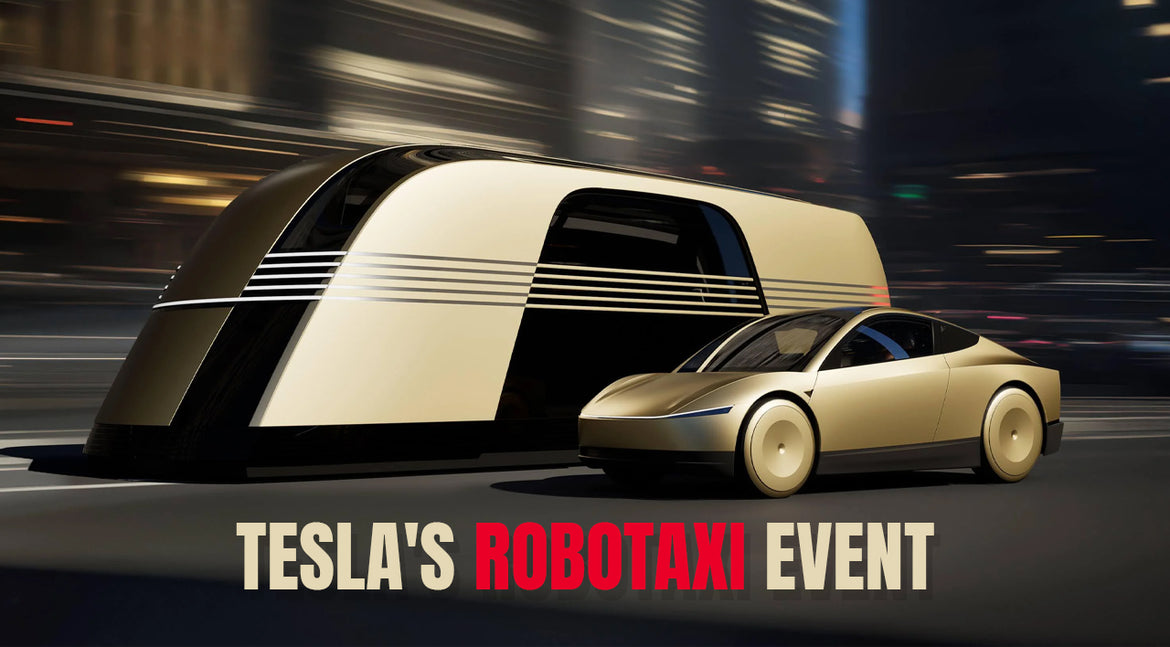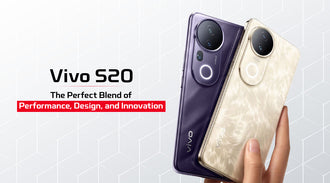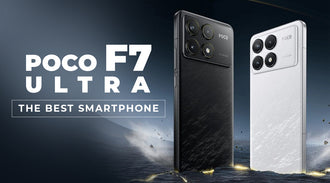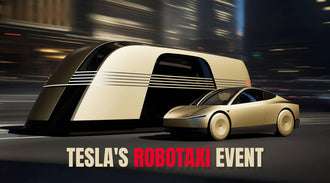
Tesla's Robotaxi Event
A Glimpse into the Future of Autonomous Vehicles and Robotics
Tesla's Robotaxi event was held in California, and it stirred things up quite a bit as well in that respect. It was going to display its technological developments, especially its automotive and robotics future, including autonomous driving technology. The headliner included presenting the new Tesla's Robotaxi alongside the humanoid Optimus, which is said to redefine transport as well as daily life.
Tesla's Robotaxi

At the launch, Tesla reiterated its vision of a fully autonomous, electric, and highly efficient taxi service called Tesla's Robotaxi. Under the helm of the charismatic Elon Musk in the presentation, the idea initially started with eliminating the need for human drivers to make travel safer and more inexpensive. The Robotaxi will be a vehicle that does not have steering wheels and pedals and will provide an absolutely autonomous ride.
Perhaps the most exciting facet of Tesla's Robotaxi is the enormous cost reduction it will make in transportation. As Musk pointed out, a ride could be as low as $0.18 per mile once the company gets Robotaxi operational—it will likely be much cheaper than the services offered by companies such as Uber or Lyft. The possibility is of an affordable, all-electric, on-demand service operating at all hours.
The idea is forward-looking, but the actual focus of the conference was on the company's situation regarding self-driving software development. Its main highlighted area is Full Self-Driving (FSD) tech, which is one of the main cornerstones of its Robotaxi plans. According to Musk, Tesla is much further ahead than it has ever been, and this is largely due to continued improvement in the neural networks that power FSD for full autonomy to operate vehicles without driver assistance.
Technical Milestones and Challenges
While much of the Robotaxi event of Tesla revolves around bigger views of transportation and robotics, one technical detail went down to an excitingly lively level of interest from many experts: Tesla's upgraded Full Self-Driving software. The company has been working on making its autonomous driving systems the main test of whether it will succeed with both Robotaxi and other autonomous vehicle projects.
The current consideration of self-driving technology by Tesla centres on cameras, radar, and ultrasonic sensors processed by advanced neural networks. But continued work on optimizing the neural network has indeed seen the system becoming much better with even tougher road scenarios; roundabouts and unprotected turns are now within the skills of cars fitted with FSD, according to Musk.
Still, the biggest challenge remains regulatory approval. Despite its continuous improvement, the FSD technology of Tesla is still in the beta phase and remains yet to be fully endorsed by the regulatory authorities of most regions for deployment on public roads. Robotoaxi - Again, bold claims were made by Tesla about its fleet, but the path towards mass production and deployment may face significant hurdles from a technical and regulatory perspective.
Optimus: Tesla's Humanoid Robot

The other feature headlined in the launch by Tesla was the launching of the Optimus robot. This humanoid robot was produced by Tesla and featured its ability to work in concert with human beings, performing simple tasks, such as handing over drinks and also playing around jokingly. A video went viral that caught Optimos when it humorously said that "the hardest part of being a robot is trying to learn how to be as human as you guys."
The Optimus event underlined the potential capacity of Optimus to be integrated into life as a means of making repetitive chore-doing more manageable. It is an expression of the deeper vision of robotics in the hands of Musk, as displayed by the event in which Tesla aspires to give meaning to a future where robots and their functionality could always guide human activity in various spheres.
Even though the event was centred largely around the promise of Optimus and Tesla's Robotaxi, it does not seem that all of the attendees could be won over. Critics pointed out that although the display by Optimus was flashy, the technology remains in its infancy. The interaction seemed a little staged, and despite the humanoid design, it's still unknown whether it's useful for everyday activities. Social media reactions have ranged from shock and amazement to scepticism and even "Are we ready as a society?" kinds of concerns about whether society is even ready for such a high level of automation in transportation or personal space.
Criticism and Skepticism
Although the Robotaxi and Optimus were the points of focus, reactions to it were mixed. On one hand, the innovation from Tesla was considered to be futuristic. A fully autonomous taxi service along with household robots will change things in industries and daily routines, indicating a promise that has never been seen or done before.
Criticism and scepticism, however, flooded the event by blasting some of the speakers. Experts found much of the event to be more aspirational than practical. Unsurprisingly, the Tesla Robotaxi demo remained quite coy regarding the extent of its development, leaving some wondering just how much closer Tesla is to providing the aforementioned true autonomy. Optimus in tow set the stage, though, where questions swirled: does a humanoid robot of this nature even belong in the home at this stage of its development? After all, more work was deemed necessary to have such robots trusted for common, everyday household chores, as these interactions appeared pretty narrowly defined.
The second concern related to this issue is safety. There have been many cases of self-driving cars that make headlines because of incidents caused by Tesla's Autopilot. There is still a significant number of people who think the technology is not ready for such unpredictable environments that people often find themselves in. While Tesla is promising corrective actions, many feel it is too long of a distance yet to be covered to fully trust Robotaxi to be safe enough to be largely adopted.
Conclusion
At the same time, as a foreshadowing, the Robotaxi event reminded the public once again of what hurdles are yet to be crossed. Autonomous vehicles and humanoid robots that will take charge of our daily routines are quite an ambitious promise. Bolder, however, is Elon Musk's vision and overview of the automobile world. Without question, the event went on to show the ambition behind Tesla and Robotaxi and its Optimus well enough to get people dreaming of the future with AI and automation.
Still, significant technical and regulatory hurdles exist before any of these will come into reality. While the company continues to push its Full Self-Driving technology forward, the road to full autonomy is harnessed with challenges. Secondly, while Optimus promises much, this robot's practical uses are still limited for now. Many questions exist at the Robotaxi event by Tesla but also on the company's commitment to a more autonomous future.
Watching progress, the world is well-informed about Tesla, and one thing is for sure: if any person is capable of turning these futuristic visions into reality, it is Elon Musk and his team at Tesla. Whether it's Robotaxi or humanoid robots like Optimus, Tesla continues pushing the boundaries of what is possible in technology and transportation.





























